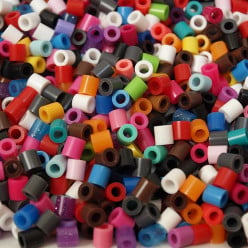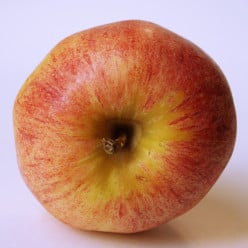Tea, milk in first or last?
Tea, milk in first or last?
Originally, when cups were made of soft porcelain the milk would be poured in first to prevent the boiling water from cracking the cup, but now that they are made from hard porcelain or bone china it no longer matters, yet people still have their preferences.
When making a cup of tea do you pour the milk in first or last, and why?Always first, because the tea then mixes it evenly so you don't get little bits of curd.
Milk first. It is actually against the law in Yorkshire, England to pour tea straight into a cup. You can be fined up to 80£ for a first offence and if you're a continual offender sent to prison for 6 weeks.
There is a chemical advantage to having milk in the cup first. As you pour you can see the tea turn from a pure peaty colour into a thoroughly blended non curdly caramel brown. All the fats present in the milk are dissolved and the flavours of both blended. The marriage of milk and tea is thus consummated. Pouring milk into tea can leave the fats only partially dissolved which leads to disaster for the palate and taste buds.
Stirring with a teaspoon is desirable to fully blend both milk and tea. Never add sugar. And always dunk biscuits.
Thanks for the question.I was led to believe that the milk first or milk second debate was more an issue of upbringing and organic to social class. Standard middle class habits tended to dictate that the milk be poured first. This could have been due to the use of china of moderate quality and its reduced resistance to staining when the tea was poured in first. It also could have been due to an attempt to distance themselves from the lower class habits of using non-porcelain based cups, tins, etc. which were not susceptible to cracks or stains and so the tea was poured first.
Established middle class and upper class traditions would call for a milk second approach. Ironically, the same order as the lower classes, although the reasons were different. The quality of china present in these wealthier households would have been more resistant to staining and therefore not adverse to tea first.
As far as the theory that 'milk first' originated when cups were made of soft porcelain; I believe that has been discounted. Any household that was using porcelain cups would have been serving tea from a teapot. After allowing for normal steeping times, although still quite hot, the water would no longer be at a temperature that would threaten even soft porcelain. The theory was first postulated by Samuel Twining and was therefore held as gospel, but is more likely than not simply folkloric myth. Both hard and soft porcelain are resistant to the temperature of steeped teas.
From the twentieth century onward, the serving traditions became regionalized. Areas with a larger working class population likely held preferences for milk first. Whereas, more affluent areas espoused a milk second tradition. After all, it was not too long ago where the expression "she/he is rather milk-in-first" was used to refer to people of a lower social standing than oneself.Lovely writing,thanks. One more important thing to remember is the hardness/softness of water which differs from region to region and affects staining of china.
I prefer it second, the heat from the water gets the tea out better (unless its a placebo effect) and the milk going in after cools it down better making it drinkable straight away.
I find it very amusing to see this question asked since this was just a topic of discussion with some clients a couple days ago. We were on a split decision!
I always let the tea steep first for five minutes before adding half & half (yes that's my preference over milk). I find that the tea flavor comes through stronger when I don't add anything until the steeping time has passed.
Now I have tried it the other way, half & half first and then tea, but I found that it didn't taste as strong as I like it therefore, I stand by my preference of tea first!We Indians drink our tea with milk. We don't drink black tea. In India we usually put the milk last and usually make tea in the pot on the heat. So we put water and tea leaves, then some cardamon and when it boils good then we add milk and wait till it boils and then pass it through sieve and serve in Cups.
Related Discussions
- 8
Should tea be drunk with or without milk and why?
by Rajan Singh Jolly 12 years ago
Should tea be drunk with or without milk and why?
- 6
Do you like milk coffee or milk tea?
by emimemo 11 years ago
Do you like milk coffee or milk tea?British people loves milk tea and American people loves coffee(coffee with milk). I would like to hear your opinion.
- 10
Do you drink your tea with the tea bag in, or out?
by Elizabeth 11 years ago
Do you drink your tea with the tea bag in, or out?What else do you put it in,honey,sugar,lemon? Do you have a special tea pot with tea cups?
- 7
Black tea, green tea or milk tea?
by reena_yadav 12 years ago
Black tea, green tea or milk tea?
- 6
Do you use a straw to drink your coffee or tea to keep your teeth from staining?
by Lyria 12 years ago
Do you use a straw to drink your coffee or tea to keep your teeth from staining?
- 21
How to make best tea?and coffe ?
by articleposter 11 years ago
I am strugling to make good one at work.Lets see your methods guys and girls.Thanks












